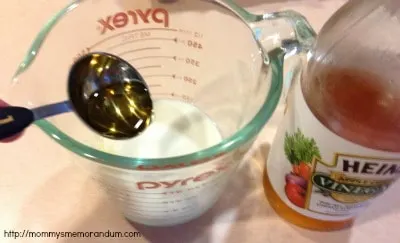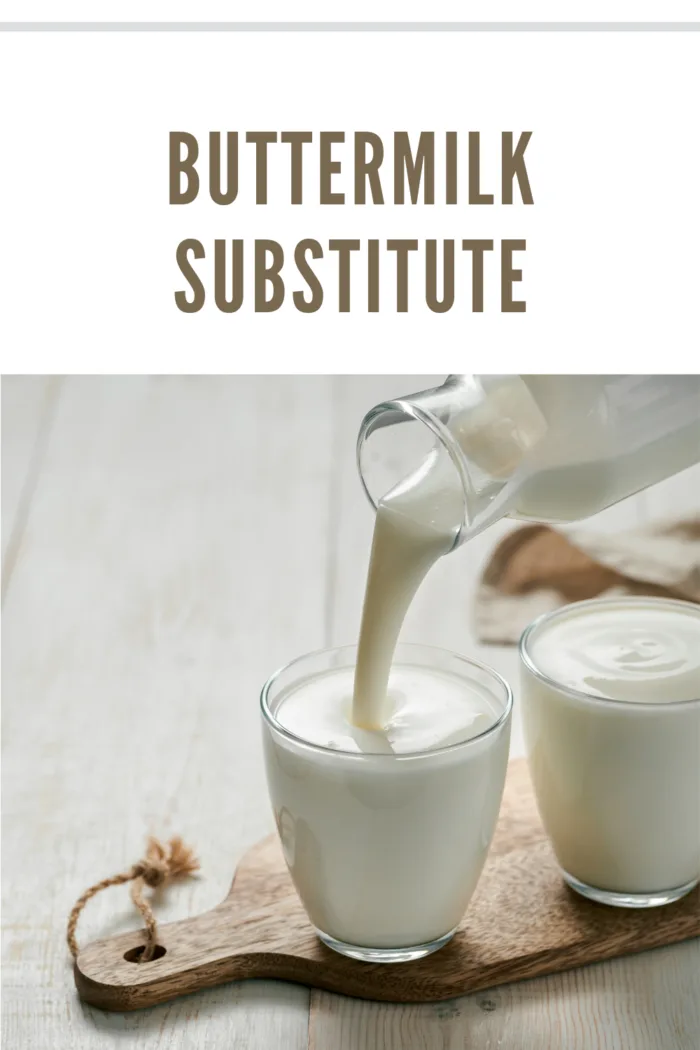Buttermilk Substitute: A Convenient Solution for Your Culinary Needs
Have you ever found yourself in the midst of preparing a delicious recipe, only to discover that it requires buttermilk? It’s a common dilemma for many of us because buttermilk isn’t something we typically have readily available in our kitchens. But fret not! There’s a simple and convenient way to create a buttermilk substitute using ingredients you likely already have on hand.
Instead of making a trip to the store or abandoning your culinary aspirations, you can easily whip up a homemade buttermilk substitute in just a few minutes.
Buttermilk Substitute
Here’s a foolproof method to create that creamy and tangy buttermilk flavor using common pantry items:

Ingredients:
- 1 tablespoon of vinegar (white or apple cider)
- 1/2 cup of 2% milk
Instructions:
- Take a small bowl or measuring cup and pour in 1 tablespoon of vinegar.
- Next, add 1/2 cup of 2% milk to the bowl.
- Give the mixture a gentle stir, ensuring that the vinegar is well incorporated into the milk.
- Set the mixture aside and allow it to rest for a few minutes. During this time, a chemical reaction will occur (enotes), causing the milk to thicken and develop a tangy flavor, reminiscent of traditional buttermilk.
- After about 5 minutes, your homemade buttermilk substitute will be ready to use in your recipe.
Now you have a versatile buttermilk substitute that can be used in various culinary applications, from fluffy pancakes and tender biscuits to moist cakes and tangy dressings. The acidic nature of the vinegar mimics the tanginess of buttermilk, while the milk provides the necessary creaminess. The best part is that you can adjust the quantity of the substitute according to your needs, ensuring you have the perfect amount for your recipe.
If you’re wondering about the science behind this buttermilk hack, it’s all about acidifying the milk. The vinegar contains acetic acid, which reacts with the proteins in the milk, causing them to curdle slightly and mimic the texture of buttermilk. This curdling process also helps tenderize baked goods, resulting in a moist and tender final product.
So, the next time you come across a recipe that calls for buttermilk and find yourself without it, don’t worry. Simply grab your trusty vinegar and milk, follow this straightforward substitution method, and you’ll be well on your way to achieving that unmistakable buttermilk taste.
Remember, improvisation and resourcefulness in the kitchen can lead to delightful culinary discoveries. Enjoy your cooking adventures with this handy buttermilk substitute, and let your creativity flourish!

FAQs for Buttermilk Substitute
- Can I use any type of vinegar for the buttermilk substitute? Yes, you can use either white vinegar or apple cider vinegar for this substitution. Both types of vinegar work well and will provide the desired tanginess.
- Is it necessary to use 2% milk, or can I use a different fat percentage? While 2% milk is commonly used in the buttermilk substitute recipe, you can experiment with different fat percentages. Keep in mind that higher fat milk, such as whole milk, will yield a richer and creamier substitute, while lower fat milk, such as skim milk, may result in a slightly lighter texture.
- How long should I let the vinegar and milk mixture sit before using it? It is recommended to let the vinegar and milk mixture sit for about 5 minutes. During this time, the chemical reaction occurs, resulting in the thickened and tangy substitute. However, if you need to use it earlier, even a few minutes of resting time can provide satisfactory results.
- Can I use non-dairy milk as a substitute for buttermilk? Yes, you can use non-dairy milk, such as almond milk or soy milk, to create a non-dairy buttermilk substitute. Follow the same ratio of 1 tablespoon of vinegar to 1/2 cup of non-dairy milk, and allow it to rest for a few minutes. Keep in mind that the taste and texture may vary slightly from traditional buttermilk, but it should still work well in most recipes.
- How long can I store the buttermilk substitute? The buttermilk substitute is best used immediately after making it. However, if you have leftover substitute, you can store it in the refrigerator for up to 1-2 days. Remember to give it a good stir before using it again, as it may separate during storage.
- Can I freeze the buttermilk substitute for future use? It is not recommended to freeze the buttermilk substitute, as freezing can affect the texture and consistency of the milk. It’s best to prepare the substitute when needed, as it only takes a few minutes to make.
- Are there any recipes that won’t work well with the buttermilk substitute? While the buttermilk substitute works well in most recipes, it may not be suitable for recipes that specifically rely on the unique properties of buttermilk, such as certain types of cultured buttermilk bread or certain fermentation processes. In such cases, it’s best to use authentic buttermilk for the best results.
Remember, the buttermilk substitute is a convenient solution for most recipes that call for buttermilk. Feel free to experiment and adjust the quantities to suit your taste preferences and recipe requirements.
